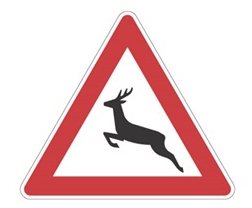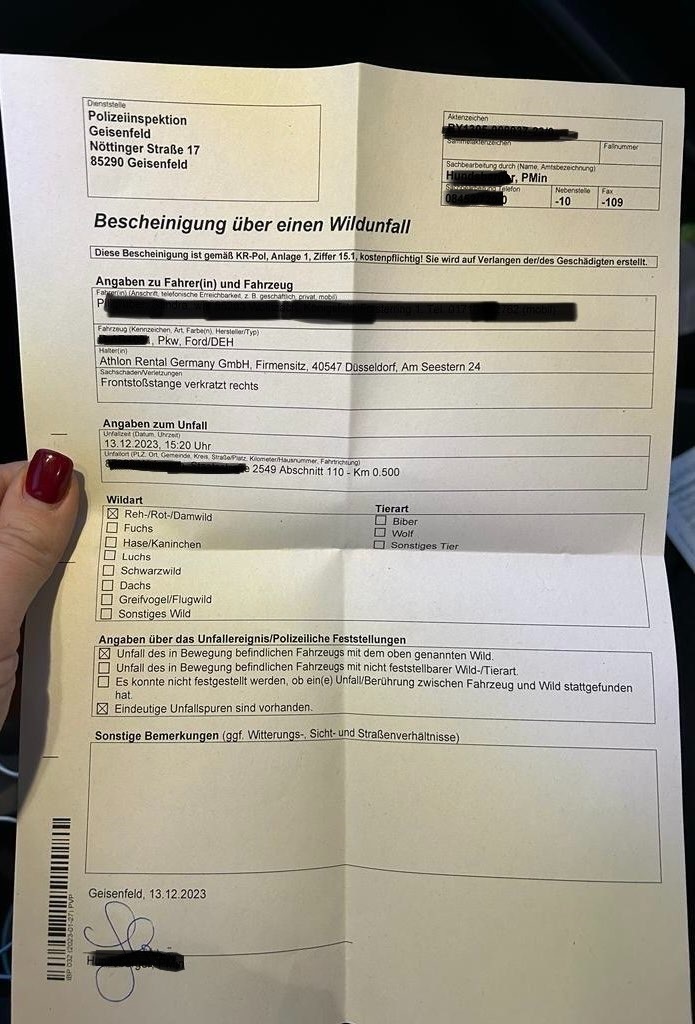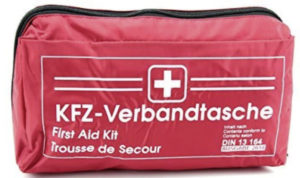Avoiding collisions with wild animals

According to statistics from the German Hunting Association, there were more than 200,000 wildlife accidents throughout Germany in 2020 and 2021. Most of them with deer.
Wildlife crosses the roads to search for food, find a partner during the rutting season or for so-called grazing. When animals see an area as part of their habitat despite a road with high traffic volumes being there, it is called grazing.
The risks of game crossings on roads are the highest in Spring and Autumn. Wild animals are also more active at dusk and night. Wildlife crossing usually occurs on roads close to fields or forests.
When driving on the road, be on the lookout for “Wildwechsel” or Wild animal crossing signs. There might also be guide posts on the edge of the road that are equipped with blue reflectors.
When you see a Wild animal crossing sign, keep the following in mind
- drive attentively and slow down. Keep below the speed limit
- Observe both sides of the road
- Switch your car’s headlights on to reflect the blue light on the guide posts. It is not visible to the driver because it is reflected back into the forest and is intended to deter animals from approaching or entering the road.
- Keep a safe distance between vehicles
- Animals tend to move in groups.
- If there is an animal in the road, slow down safely, turn off your car’s headlights (brights) and honk at the animal. Keep a watch out for the herd that might follow!!!
When it is not possible to avoid a collision
In situations where a collision seems almost inevitable, it’s crucial to remain as calm as possible and avoid panicking. Though it may seem counterintuitive, braking can be one of the most effective ways to reduce the impact of a crash. However, you must brake smoothly and decisively — the last thing you want to do is pump the brakes or apply them too hard.
It is important to hold the steering wheel firmly to maintain control over your vehicle.
Swerving uncontrollably can be more harmful, leading to a collision with oncoming traffic.
What to do in an accident
When you do hit a large wild animal, and you are not hurt, the first thing you should do is secure the scene of the accident by switching your hazard warning lights on, putting on a high-visibility vest and setting up the warning triangle.
If any passengers are hurt, phone the national emergency number 112, and if necessary, administer first aid.
Phone the police by calling the 110 number, they will inform the area game tenant (Jagdpächter).
If the driver of a vehicle does not report a wildlife accident immediately, this may constitute an offence under § 4 (4) and § 67 (2) No. 1 of the [German national] Hunting and Wildlife Management Act (JWMG). German: Jagd- und Wildtiermanagementgesetzt.
Remember animals that are hurt and scared can act aggressively, try to keep a safe distance. The Jagdpächter will handle the injured animal. If the animal is dead, try to pull it to the edge of the road to avoid further accidents, but please do not touch the animal with your bare hands, wear gloves to protect yourself from parasites or diseases.
Important: The animal must not be removed from the scene of the accident, otherwise you risk being charged with poaching. This can result in a penalty.
Insurance
You will need an accident report ( Wildunfallbescheinigung) for your insurance claims. The police or Jagdpächter must issue you with such a report.
A wildlife accident occurs when a vehicle is damaged as a result of a collision or evasive manoeuvre with an animal. The animals must be furred game.
The following wild animals belong to furred game: Wild boar, Deer, Fallow deer, Foxes and Lynxes.
If you have vehicle damage due to a collision with game birds, it does not count as a wildlife accident. Examples of game birds include a pheasant or a hawk.
Wait for the police report or assessment to be done before removing any fur residue or blood from the vehicle.
You must report the accident to your car insurance within 5 days. Also refer to your insurance documentation.
Below is an example of a Wildunfallbescheinigung

Info on the web
- Was bedeuten die Zeichen auf einem Leitpfosten?
- Busgeldkatalog – Vorsicht Wildwechsel! So verhalten Sie sich richtig!
- ADAC – Wildunfall: So verhalten Sie sich richtig
Related content

First aid kit
The traffic law in Germany stipulates that all drivers must carry a first aid kit (Verbandkasten) in their vehicle. The contents of your first aid

Winter Tyres
The winter conditions in Germany can make the roads dangerous and slippery to drive on.Winter conditions are for example black ice, slippery snow, slush, slippery

Emergency Contacts
The following numbers can be dialled in an emergency, either from a landline or mobile phone. 112The national emergency number. This can be used for


You must be logged in to post a comment.